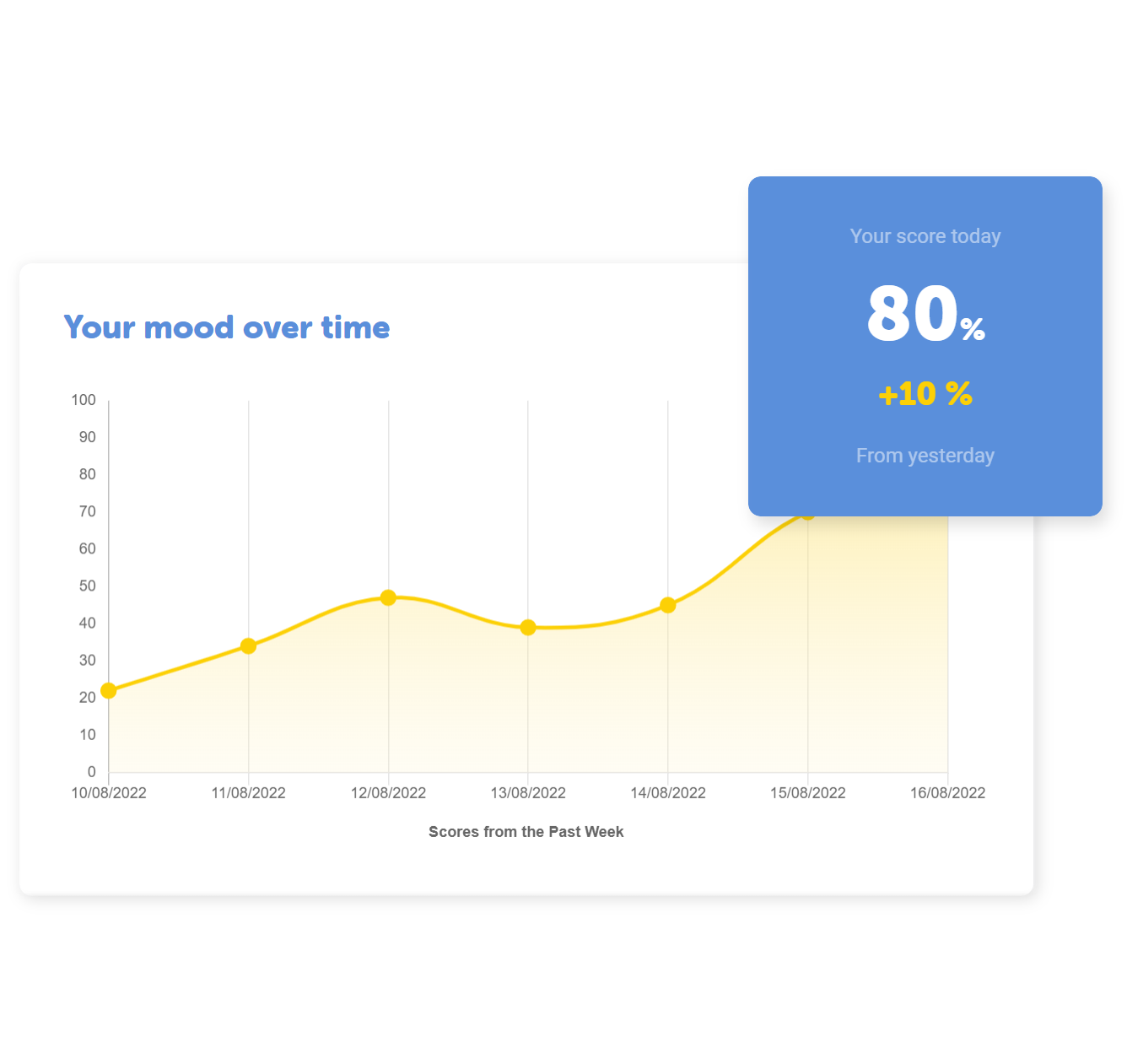How Moodscope works
Moodscope is easy to use. It has to be, as you'll be using it everyday for maximum benefit! We have a very simple setup process.
Sign up
Sign up for a 21-day free trial using your email address and a password. You'll need to add a payment method for after that period. After 21 days, the first payment will be taken. You can cancel your account at any time.
Take test
Measure your mood every day using an online card game. You'll receive your Moodscope score: a percentage score of between 0 and 100, and get immediate feedback.
Track mood
Your scores will be plotted on a graph. Track your daily scores to learn what could be causing your ups and downs. Share your scores automatically with your buddies if you choose.
Record your score daily
The mood-measuring itself is straightforward. You’ll be shown 20 double-sided playing cards, each representing an emotion like alert or nervous. The cards can be flipped back to front or spun head to toe (try it on the left) to choose one of four degrees to which you might be feeling that emotion, on a scale from Very slightly or not at all to Extremely. The cards appear in a different order every day so the test feels fresh every time you take it. We’ve found it’s best to do this at the same time each day. The early morning (soon after you’ve woken up) works best as it seems to capture your mood before the events of the day have kicked in. Having taken the test, you receive your Moodscope score as a percentage value. 100% indicates that you are very happy, while 0% suggests that your spirits are extremely low.
Determined
Being resolute, showing determination.
Extremely
3
Quite a bit
2
A little
1
Very slightly or not at all
0
Track your ups and downs
Moodscope stores your scores every day and plots them on a line graph so you can track your ups and downs as time goes by. The graph also shows your all-time average, as well as the highest and lowest levels you’ve ever reached. You can add annotations to the graph, enabling you to leave a note for future reference that explains why you may have been feeling the way you did. Take a look at the Affectogram to see how your 20 underlying Moodscope emotions contribute to your overall wellbeing. And explore the likely causes of both your better days and your less-good ones with the Triggergrams.

Buddies to support you
You track your own mood with Moodscope, but perhaps the best bit is being able to nominate someone – or more than one person if you like – to act as your buddy. Each day when you’ve taken the test, Moodscope automatically emails your score to your buddies, along with a link to your graph so they can follow your progress. A buddy could be a trusted friend or colleague. They could be a partner or relative. They might even be a counsellor or therapist.

Monitoring can lead to positive change
There are plenty of examples in other areas of life that suggest that monitoring something regularly can lead to positive change. People who wear a pedometer tend to walk a mile a day more, on average, than those who don’t. Dieters who weigh themselves every day lose more weight than those who weigh themselves less frequently. Problem drinkers who are asked to keep a diary of their alcohol consumption tend to reduce their drinking over a period of time. Moodscope members have noticed similar effects over time: tracking their mood and sharing it seems to have caused them to be happier.
